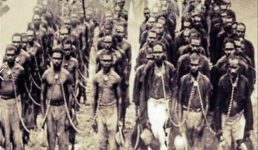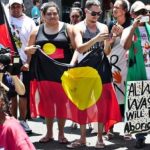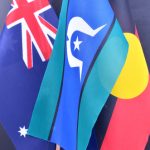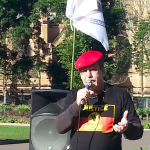Crimes Against Humanity: The British Empire

It was the largest empire ever to have existed. And as the saying used to go, the sun never sets on the British Empire. At its height in 1922, the colonial power was lording it over a fifth of the world’s population and for many of them, the sun never rose again.
Under the policies of British colonialism, people around the globe were subjected to mass famines, atrocious conditions in concentration camps, and brutal massacres at the hands of imperialist troops. The Brits also played an integral role in the transatlantic slave trade.
Although the atrocities of the British Empire are well documented, the myth of the noble colonising power continued into recent decades.
The Migrated Archives
During proceedings in the British High Court in 2010, University of Warwick historian David M Anderson submitted a statement referring to 1,500 files that went missing from Kenya as British rule in the region was coming to an end.
This led the British government to concede that they had hidden or disposed of those files, and many others at a high-security facility north of London. The Foreign and Commonwealth Office was hiding around 600,000 historical documents in breach of the 1958 UK Public Records Act.
The stash included around 20,000 undisclosed files from 37 former British colonies. Indeed, it’s common knowledge that as the British colonial edifice was disintegrating, administrators of the colonies were told to either burn their documents or try and smuggle them out.
The legal proceedings where Mr Anderson made his revelations related to a case brought against the British government by three elderly Kenyans who claimed they’d been tortured and abused by the colonial authorities during the British occupation of their country.
The British gulag in Kenya
The British first moved into East Africa in the late 19th century, and Kenya was declared a Crown colony in 1920. In the 1940s, after half a century of British occupation, a small group of Kikuyu people – the country’s largest ethnic group – formed the Mau Mau movement and vowed to oppose colonial rule.
As word spread, Mau Mau resistance grew and they began knocking off colonial officers and local loyalists. In October 1952, Governor Evelyn Baring declared a state of emergency, which held until 1960.
In 1964, the colonial army began erecting a network of concentration camps. Historians estimate that 150,000 to 1.5 million Kikuyu people were detained. Conditions within the camps were atrocious, and people were systematically beaten and sexually assaulted during questioning.
The grandfather of Barack Obama, Hussein Onyango Obama suffered severe mistreatment in the camp where he was held, which included having pins forced under his fingernails.
The British government, after being continually defeated in the High Court, agreed to settle the Mau Mau case in 2013.
On June 6 that year, then UK foreign secretary William Hague announced 5,000 survivors would each receive £3,800 payment, and he also expressed the nation’s sincere regrets to Kenyans who were subjected to “torture and other forms of ill-treatment at the hands of the colonial administration.”
The desecration in India
It’s said that India was the jewel in the crown of the British Empire. The British East India Company began making avenues into the subcontinent in the 17th century, and India was established as a Crown colony in 1858.
The British Raj systematically transferred the wealth of the region into their own coffers. In the north eastern region of Bengal, “the first great deindustrialisation of the modern world” occurred.
The prosperous two centuries-old weaving industry was shut down after the British flooded the local market with cheap fabric from northern England. India still grew the cotton, but the Bengali population no longer spun it, and the weavers became beggars.
India suffered around a dozen major famines under British rule, with an estimated 12 to 29 million Indians starving to death.
The Orissa famine occurred in north eastern India in 1866. Over one million – or one in three local people – perished. As the region’s textile industry was destroyed, more people were pushed into agriculture, and were dependent on the monsoon.
That year, the monsoon was weak. Crops didn’t grow and many starved to death. The colonial administration didn’t intervene as the popular economic theory of the time reasoned that the market would restore proper balance, and the famine was nature’s way of responding to overpopulation.
When the British finally got out of India, they simply drew a line down the map and partitioned the subcontinent into India and Pakistan. The move led to the mass migration of around 10 million people, and when it escalated into sectarian violence an estimated one million lost their lives.
A southern invasion
The British began invading Australia in 1788, under the pretext that it was terra nullis: a land with no owners. The High Court of Australia abolished the legal fiction of terra nullius in its 1992 Mabo versus Queensland (No 2) ruling.
It was a landmark decision, but not everyone was surprised that the court found that there were actually sovereign people living on the land prior to the arrival of the British. At that time, there were an estimated 750,000 Aboriginal and Torres Strait Islander people living across the continent.
The First Fleet arrived in the vicinity of what is now the city of Sydney in 1788. Around 15 months later, at least 50 percent of the local Aboriginal population was dying due to a smallpox epidemic.
Some historians put the outbreak down to contact with the Macassans from Sulawesi in the far north of the continent. However, others argue that bottles of smallpox were brought across on First Fleet ships, and the disease was then released, either accidentally or with clear intent.
Dozens of massacres of Indigenous people were carried out by the British right up until the 1920s. On June 10 1838, the Myall Creek massacre occurred near Inverell in NSW. This tragedy is well-known as it was the first time Europeans were brought to justice for such an atrocity in Australia.
At the time about 50 Aboriginal men were working for stockmen in the area. One evening the stockmen rode into the local people’s camp, tied up 29 men, women and children, and beheaded them. Seven of the perpetrators were eventually brought to trial and hanged.
Today, in Australia, the colonial legacy continues. Aboriginal and Torres Strait Islander people are the most incarcerated population on earth.
As of March this year, there were 11,288 Indigenous adults detained in the Australian prison system. First Nations peoples account for only 2.5 percent of the overall Australian adult population, yet they represent 28 percent of the adult prisoner population.
A bloody trail
But these are only some of the crimes perpetrated by the British as they carried the greatest land grab the world has ever seen.
There were the concentration camps in South Africa, where tens of thousands of the Boer population were detained in the first years of the 20th century. The Irish potato famine occurred in the 1840s, leading to the deaths of well over a million people.
There were the torture centres in Aden in the 1960s, where nationalists were kept naked in refrigerated cells. When the Empire was facing communist insurgents during the Malaya Emergency of the 1950s, they simply decided to imprison the entire peasant population in detention camps.
And the list goes on…







